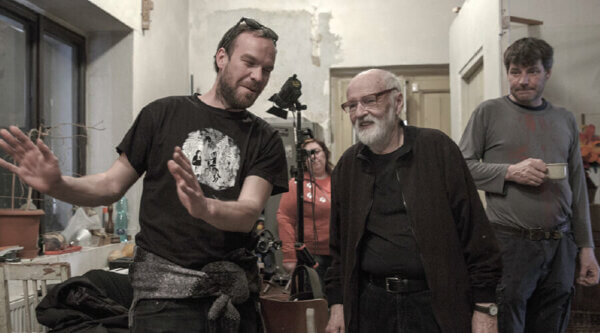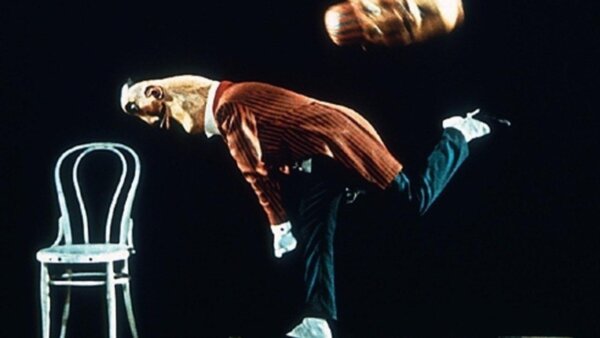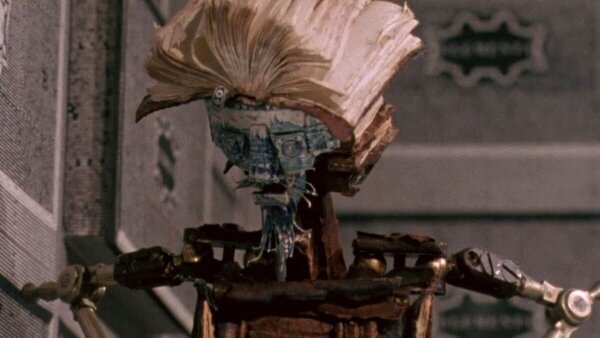The Last Trick: How Jan Švankmajer’s Filmmaking Debut Impacted His Career and the Worldwide Animation Industry
When it comes to surreal and experimental stop-motion animations, one of the most recognisable filmmakers who specialise in this area is Czech Republic filmmaker Jan Svankmajer, who made a total of twenty-six short films and seven feature-length productions before declaring Kunstkamera (2022) to be his final work. It all started in 1964 with his debut as a film director with the short film The Last Trick.
Sixty years ago, those fortunate to attend some European film festivals were treated to the film and the two magicians sitting on opposite sides of an empty theatre stage, taking turns to outperform one another with a series of surreal and absurd magical tricks before their jealousy towards each other leads to them being torn apart. Using a mixture of black theatre techniques, stop-motion animation, and puppetry, this short film would start a long and successful career where his work would spread to a global fanbase, help build careers with those around him, and influence multiple big-name filmmakers.
But what was Svankmajer’s life like before he made this film? How did he evolve his craft and art style within animation? And why, sixty years later, does the short film remain one of his most important pieces of work to date?

Director Adam Olha, Jan Daňhel, Czech Republic Slovakia 2020
(Cast Jan Švankmajer, Jaromír Kallista) (Source: Czech Centre London)
Before he directed his first scene for The Last Trick, Svankmajer majored in Puppet Set Design and Production at The School of Supplied Arts in Prague between 1950 to 1954, which led him to enrol at the Academy of Performing Arts within their puppetry department. As well as being part of this department, he also worked within the Laterna Vratislav Effenberger theatre, became the leader of the Czech Surrealist Commune, and founded the Theatre of Masks. His love for puppetry and Czech marionette theatre would continue to grow and expand his career as an artist, eventually leading to his first film position.
Svankmajer took his first step in the film industry as one of the puppet actors in a short film named Johannes Dr. Faust, directed by Emil Radok. After Radok created the first multimedia theatre, Magician’s Lantern, he wanted to experiment with puppets for a short film that told the life story of German alchemist and astrologer Johann Georg Faust, who became a figure of folklore and theatre in the 15th century. Using the skills he acquired as a professional puppeteer through his years in theatre, the young Svankmajer gained his first insight into film production and would meet and be inspired by other talented artists to eventually sit in the director’s seat himself.
The Last Trick was released at several film festivals in 1964, including the Gran Premio Bergamo in Italy, the Mannheim-Heidelberg International Film Festival in Germany, and the Tours Short Film Festival in France. This would become the start of a long and successful career as a filmmaker, where he would expand his skills as a filmmaker and become associated with stop-motion animation.
His visual prowess and influences from his time in the theatre and the artists and filmmakers that he previously worked with obviously made an impact on him after the release of The Last Trick onto the festival circuit.
While Svankmajer himself doesn’t necessarily see himself as an animated filmmaker, there’s no denying that the small uses of stop-motion in The Last Trick sparked a curiosity and an interest that saw it being used to create mesmerising and nightmarish sequences that couldn’t be done through his puppetry experience and live-action performances. A Game With Stones in 1965 would be his first fully animated short film and saw him use different stone minerals and brass items to animate and breathe life into everyday objects to create compelling imagery. His fascination for experimenting with different objects for his animations only expanded, with Picnic of Weissman (1968) Jabberwocky (1971) and Dimensions of Dialogue (1982) seeing them featuring dolls, clothes, paper, and clay to create surreal worlds and portray complex themes and emotions in a unique and spellbinding way that captivated attendees to film and animation festivals worldwide.
After making short films for over two decades, the time came for him to take upon the challenge and adapt the pages of Lewis Carroll’s Alice in Wonderland as his first feature film, which eventually premiered in 1988. With previous adaptations before it, with Walt Disney Animation being the most recognisable to a majority of people, Svankmajer was able to use his craft and alchemy-like filmmaking to mix live action and animation as well as the talents of his crew to turn the pages of the book into a surreal and dream-like experience that many wouldn’t have been able to do, earning itself the award for best feature film at the 1989 Annecy International Animated Film Festival.
He continued to make fictional feature films as well as a few shorts until 2018, when he released Insects. Mixing a theatre setting, stop-motion, and surreal performances from the cast, the themes and filmmaking that Svankmajer initially used in The Last Trick were bought back for this production. He returned and sat back in the director’s chair for one last time with his documentary, Kunstkamera, in 2022.
But as much as The Last Trick would help to build his career as a film director and help him establish his art style, those who collaborated with Svankmajer on this project would also cement some lasting, professional relationships with him and would become celebrated Czech artists in their own right.
Vlasta Pospislova (1935 to 2022) was, and still is, considered one of the key figures in Czech animation, having demonstrated her talents with puppet animation as she began her career at the Jiri Trnka Studio, then regarded as a famous Czech animation studio, after graduating from the Academy of Arts, Architecture and Design in Prague in 1956. Working on several short animated films or those that used scenes of puppet animation, she worked with Svankmajer on The Last Trick and grew her skills as an animator, collaborating with him on Jabberwocky and Dimensions of Dialogue before she made her debut as a director on About Mary and the Wolf Castle and becoming a key figure in European animation.
Svatopluk Maly (1923 to 2018) became Svankmajer’s director of photography for a majority of his short films and feature productions, with their last project together being Faust, the director’s second feature-length film and one of his darkest and most surreal productions in his established career. While Maly worked with other directors, his work with the renowned director has cemented him as a celebrated cinematographer within the Czech film industry.
The Last Trick may have introduced him to future colleagues and friends, but it also saw him work with the woman who would eventually become his wife. Eva Svankmajerova (1940 to 2005) was the short film’s production assistant and would become her husband’s art director for his productions up to Sileni, which was to be her last film before her death. But if she wasn’t working on films, Eva created pieces of surreal art that consisted of paintings and ceramics that were celebrated in multiple exhibitions in the Czech Republic and earned her a reputation as a beloved artist.

Eva Svankmajerova and Jan Svankmajer. Photo taken by Gene Deitch (fair use) and sourced from www.mchabocka.com
While spending decades honing his craft and exploring new ways to incorporate and implement his skills as a director, he was seen by many as an auteur with his unique creative flair behind the camera from the multiple film festivals he attended alongside his various productions. With his deserved wins of several awards from these film festivals across Europe, his work began to influence generations of filmmakers from around the world, some of whom garnered big names in their own right.
Henry Selick, the director of beloved and gothic stop-motion animated American productions like The Nightmare Before Christmas, Coraline, and Wendell & Wild, cited how Jabberwocky stood out to him among the plethora of films that his teachers showed him during his time as a student at Cal Arts. Citing the imagery used in this film and its approach to stop-motion, Selick said in an interview with Cartoon Brew how he “wanted to make independent films like Svankmajer’s.”
Other directors became fans of Jan Svankmajer, such as Terry Gilliam and Tim Burton, but the filmmaking duo The Quay Brothers showed how inspiring and unique he was for European animation by making a short film dedicated to his craft. The American identical twins directed the 1984 short film The Cabinet of Jan Svankmajer, filled with visual references and key elements to the man’s artistry that fans of these directors will enjoy.
While sixty years have passed since his debut short film, Jan Svankmajer’s The Last Trick is arguably one of his most important as it paved the way for him to become an influential artistic film director within both animation and live-action film production. Without it, we may have never been treated to a plethora of surreal and artistic European animation and filmmakers from around the world who were inspired by the unique qualities that only he could offer for his projects.




